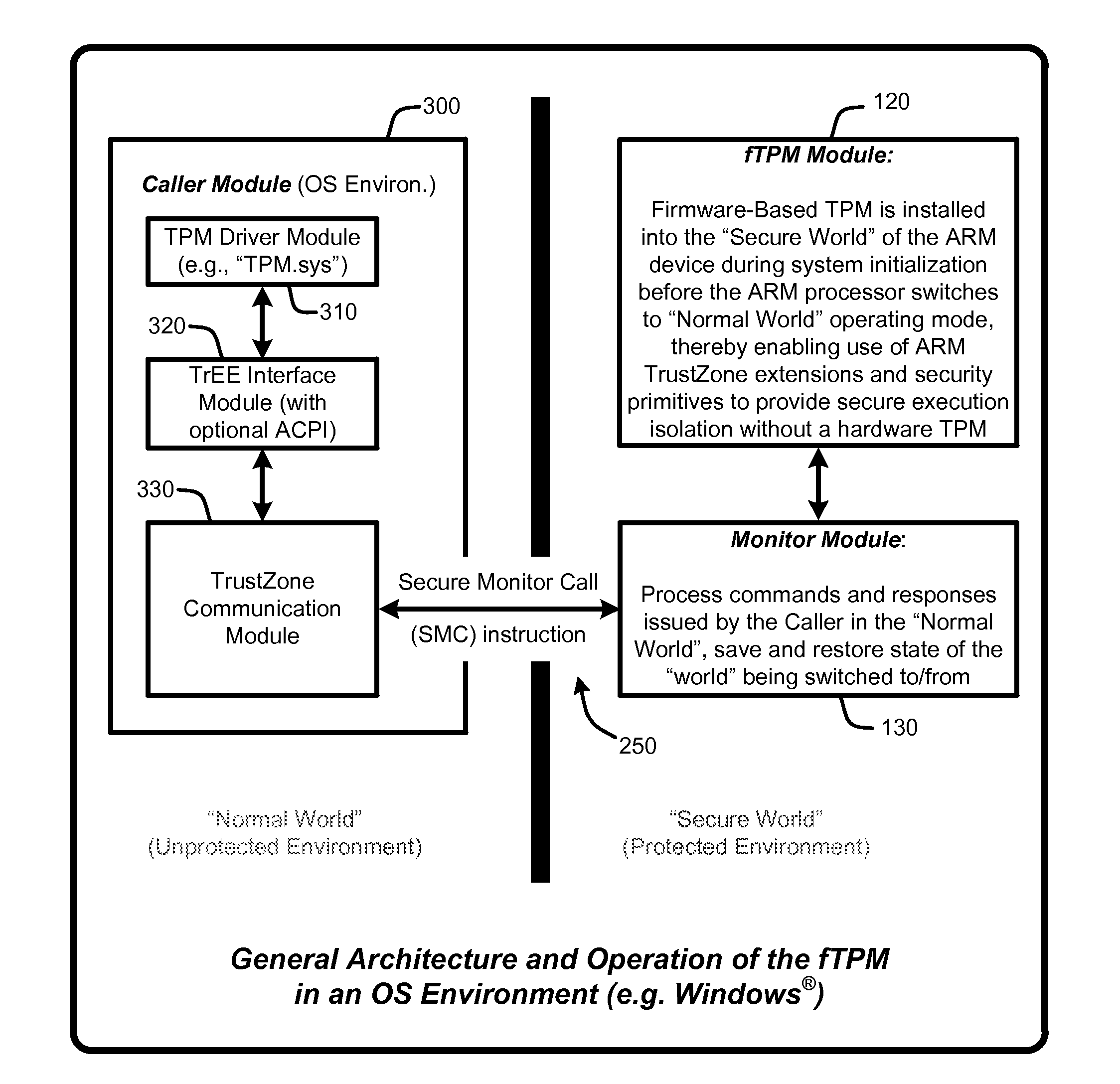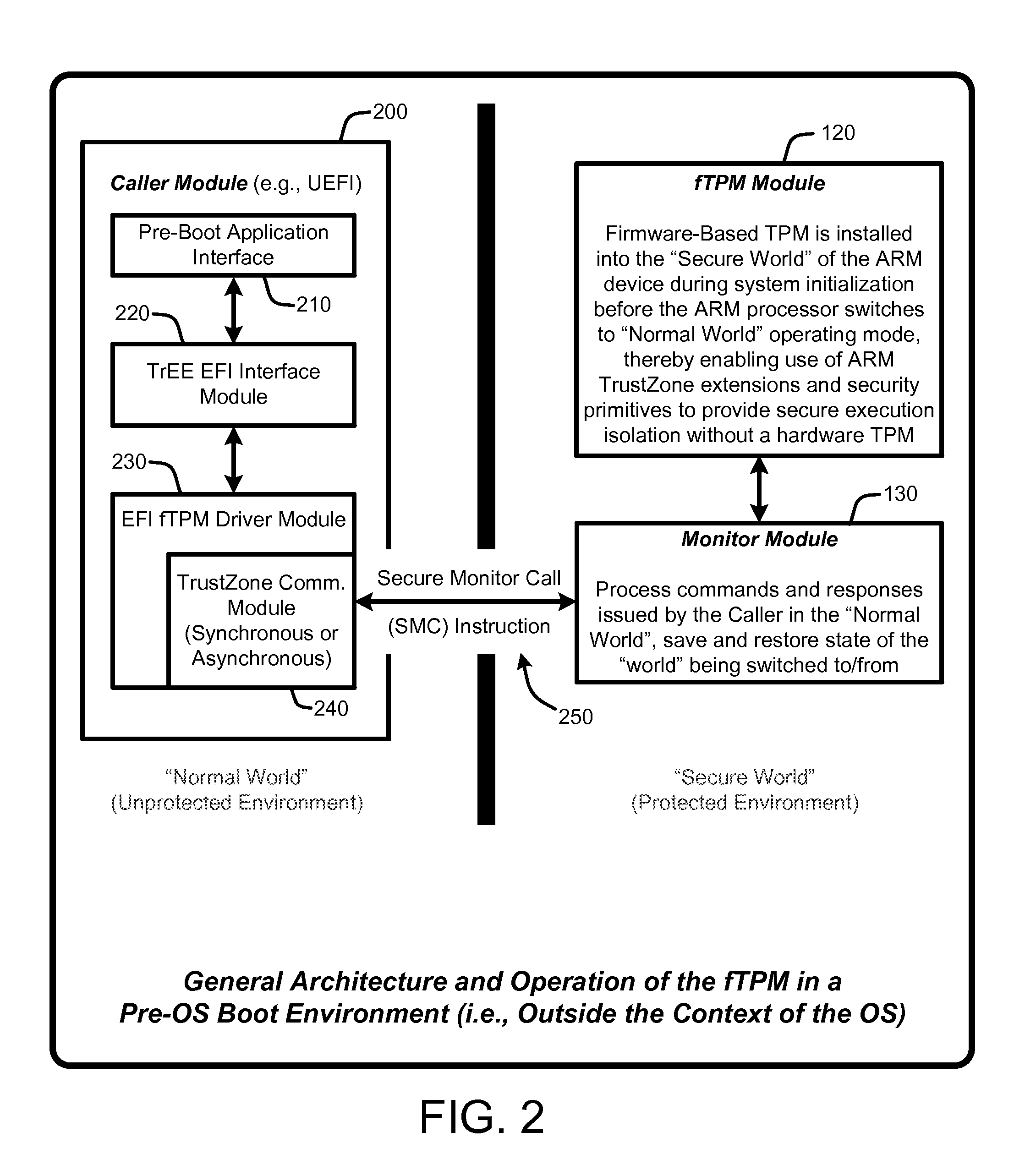Firmware-based trusted platform module for arm processor architectures and trustzone security extensions
a technology of arm processor and trusted platform, applied in the direction of unauthorized memory use protection, instruments, error detection/correction, etc., can solve the problems of limited use, tpm chips are still vulnerable once exposed to applications, and keys are still vulnerable to applications, so as to achieve the effect of adding a cost to the system
- Summary
- Abstract
- Description
- Claims
- Application Information
AI Technical Summary
Benefits of technology
Problems solved by technology
Method used
Image
Examples
Embodiment Construction
[0025]In the following description of the embodiments of the claimed subject matter, reference is made to the accompanying drawings, which form a part hereof, and in which is shown by way of illustration specific embodiments in which the claimed subject matter may be practiced. It should be understood that other embodiments may be utilized and structural changes may be made without departing from the scope of the presently claimed subject matter.
[0026]1.0 Introduction:
[0027]In general, as with a conventional hardware TPM, a “Firmware-Based TPM” or “fTPM,” as described herein, ensures that it preserve its code and data integrity and confidentiality from all other software running in the system to prevent a wide variety of potential security breaches as well as enabling a wide variety of security application (e.g., cryptographic applications, secure random number generation, disk / file encryption, password authentication, etc.). Isolation can be implemented with a dedicated security pr...
PUM
 Login to View More
Login to View More Abstract
Description
Claims
Application Information
 Login to View More
Login to View More - R&D
- Intellectual Property
- Life Sciences
- Materials
- Tech Scout
- Unparalleled Data Quality
- Higher Quality Content
- 60% Fewer Hallucinations
Browse by: Latest US Patents, China's latest patents, Technical Efficacy Thesaurus, Application Domain, Technology Topic, Popular Technical Reports.
© 2025 PatSnap. All rights reserved.Legal|Privacy policy|Modern Slavery Act Transparency Statement|Sitemap|About US| Contact US: help@patsnap.com



